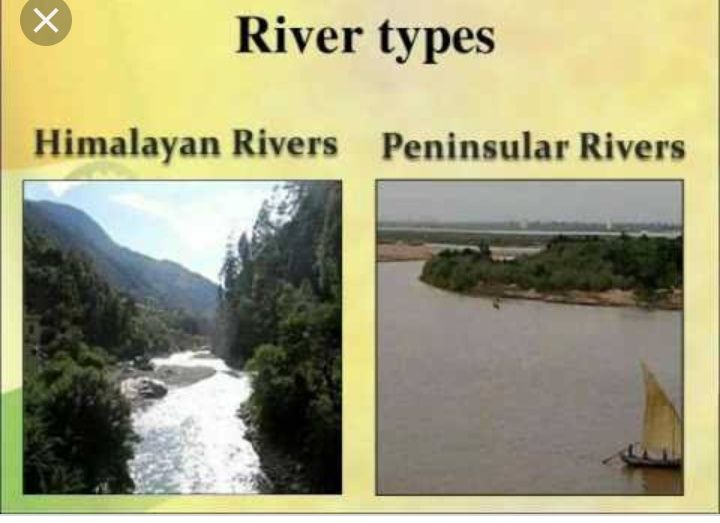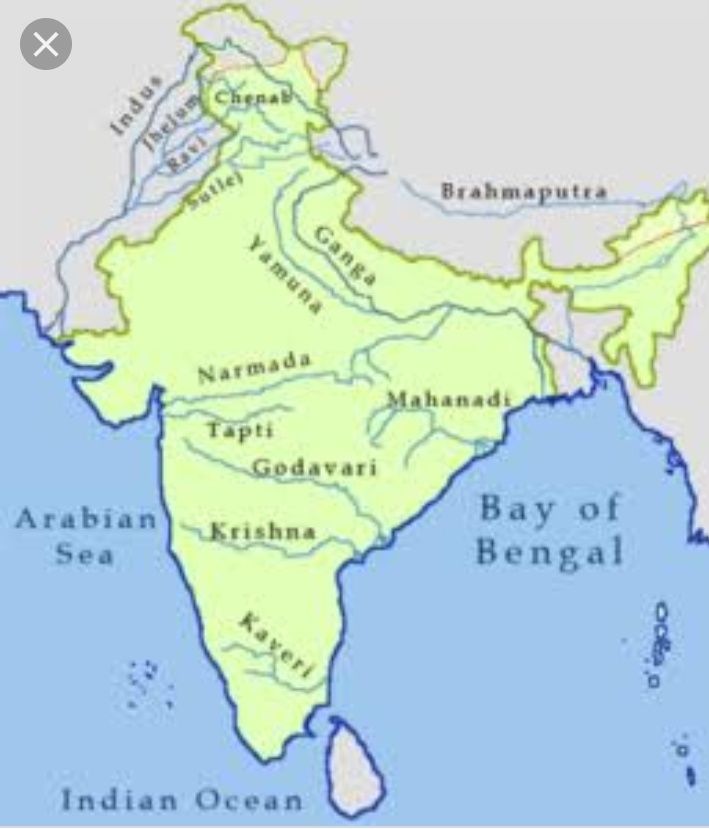Do You Want To Know The River System Of India?
May 10, 2019 • 554 views
River is a natural flowing watercourse (generally freshwater) which flows towards an Ocean, Sea, Lake or another river. It begins at a source, follows a path (course) and ends at a mouth.
River System means a river along with its tributaries. However, the Indian River System is classified into two types based on their source. They are :-
1. Himalayan Rivers
2. Peninsular Rivers

HIMALAYAN RIVERS :-
The Himalayan Rivers originate from the Himalayas and flow through the Northern Plains. The major Himalayan River System are :-

• The Indus River System :-
In the early Hindu Scriptures and mythological texts the Indus River is found as Sindhu River and also known as Puranik River. Indus River originates near Manasarovar lake in Tibet. It comprises the main Indus and it’s major tributaries are the Kabul and Kurram on the right bank and the Jhelum, Chenab, Ravi, Beas, and Sutlej on the left bank. It is the largest river in Pakistan and also the National River of that country. It enters India in J&K and flows further in Himachal Pradesh, Punjab and finally reaches the Arabian Sea.
• The Ganga River System :-
Ganga (Ganges) River System is the largest river system in India and also the National River of India. It originates in the Gangotri glaciers. To form river Ganga the upstream Bhagirathi joins the Alaknanda stream at Devprayag. The major tributaries of Ganga are Yamuna, Mahananda and son on the right bank and Gomti, Ghaghara, Gandaki and Kosi on the left bank. It flowsin states of Uttarakhand, Uttar Pradesh, Bihar and West Bengal which finally reaches Bay of Bengal.
• The Yamuna River System :-
The Yamuna River is also called as Jamuna which is a major river system in Northern India. The river rises from Yamnotri. Its major tributaries are Tons, Chambal, Hindon, Betwa and Ken. It flows in states of Uttarakhand, Uttar Pradesh and Haryana.
• The Brahmaputra River System :-
Brahmaputra is one of the major rivers in India and has the greatest volume of water. It originates in the Angsi glacier, Tibet. It is known as Tsangpo River in Tibet when it enters into India at Arunachal Pradesh it is called as Dihang River. To form Brahmaputra River the Dihang, the Lohit, the Kenula tributaries join. It flows in states of Assam, Bangladesh and finally reaches Bay of Bengal.
PENINSULAR RIVERS :-
Peninsular River System or Peninsular Drainage emerges mainly from Western Ghats as they form a water divide these rivers either flow eastwards into the Bay of Bengal or westwards into the Arabian Sea. These are rain-fed rivers. The major Peninsular River Systems are :-

• Mahanadi :-
Mahanadi is a major river in East – Central India and deposits more silt than any other river in the Indian Subcontinent. It originates in Sihava Mountains, Chattisgarh.
• Godavari :-
Godavari River is the second longest river after Ganga. It originates at Triambakeshwar, Maharastra. The major tributaries are Pravara, Indravati, Manner, Sahib. It flows in the states of Maharashtra, Chattisgarh, Madhya Pradesh, Orissa, Telangana, Andhra Pradesh, Karnataka and Pondicherry. However finally reaches the Bay of Bengal.
• Krishna :-
The Krishna River is the third longest river in India. It originates in Mahabaleshwar, Maharastra. It flows in the states of Karnataka, Telangana and Andhra Pradesh. However finally reaches the Bay of Bengal.
• Kaveri :-
In southern India the Kaveri River is a major river. It originates in Kogadu, Karnataka. There are many tributaries such as Hemavati, Moyari, Shimsha, etc. It flows in the states of Karnataka, Kerala, Tamil Nadu and Pondicherry. However finally reaches the Bay of Bengal.
